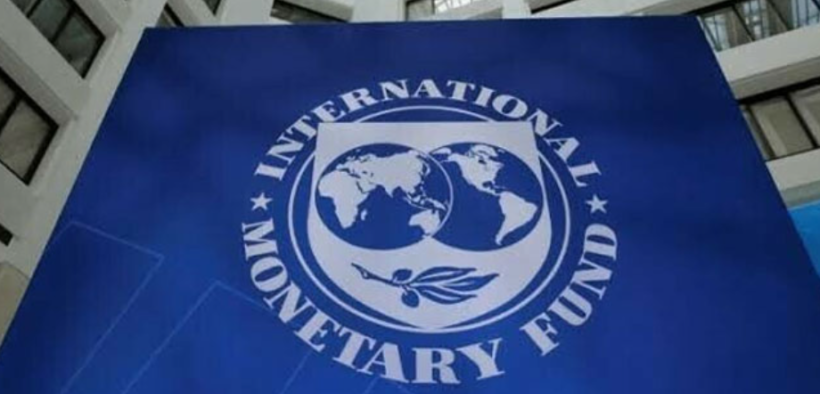IMF associates Pakistan with nations ravaged by war

Pakistan is one of six countries that the International Monetary Fund (IMF) has classified as having major conflicts this year. The IMF claimed that these conflicts, along with strict macroeconomic policy constraints, will negatively impact the countries’ economic production.
In a separate meeting, IMF Managing Director Kristalina Georgieva and Finance Minister Muhammad Aurangzeb met on Wednesday in Washington. The minister expressed Pakistan’s desire to look for a longer-term assistance deal. Regarding the meeting, the finance ministry has not released any information.
But later, Jihad Azour, the director of the IMF for Middle East and Central Asia, told reporters that the Fund was prepared to assist Pakistan and emphasized that the reform package was now more significant than the scope of the new program.
At a news conference held on the fringes of the IMF 2024 spring meetings, Azour stated, “I think what is important at this stage is to accelerate the reforms, double down on the structure of reforms in order to provide Pakistan with its full potential of growth.”
The IMF stated earlier on Thursday in its report on the Middle East and Central Asia area that the region’s economic outlook for 2024 had been cut down to 2.6% due to ongoing growth challenges caused by wars, restrictive policy settings in certain nations, and decreased hydrocarbon output.
At the beginning of 2024, six economies in the Middle East and North Africa (MENA) and Pakistan faced conflicts outside of the West Bank and Gaza. The report’s footnote stated, “These include Iraq, Pakistan, Somalia, Sudan, Syria, and Yemen. It was issued on the fringes of the World Bank-IMF spring sessions.
Associating Pakistan with nations that are embroiled in violent conflicts, such as civil wars, may be detrimental to Pakistan’s reputation abroad and discourage investment. This demonstrates how poorly the Finance Ministry handled the IMF’s business.
According to the IMF analysis, a nation was deemed to be engaged in a conflict if the Armed Conflict Location and Event Data Project documented a minimum of 25 battle-related deaths over the period of January 1, 2024, to March 8, 2024. Attacks by terrorists against the nation’s military forces and civil defense have increased, with five Chinese nationals killed in one deadly attack on the country’s Chinese residents last month.
According to the research, uncertainty was increased by the fighting between Israel and Gaza and the already difficult situation, which was made worse by impediments to shipping across the Red Sea. It did, however, add that, over the medium term, economic growth was expected to stay below historical norms while gaining momentum as the effects of hostilities and reductions in oil output progressively subsided.
The research emphasized that the prospects for economic development in the region and in Pakistan was marked by an uneven recovery against the backdrop of ongoing structural issues, violent conflicts, and dependency on hydrocarbons.
After declining in 2023, it was predicted that Pakistan’s growth would pick up to 2% in 2024, helped along by persistently favorable base effects in the textile and agriculture industries.
Pakistan’s population grew at a 2.6% annual pace; a low growth rate of 2% meant worse unemployment and poverty in the nation most affected by the ongoing inflationary wave.
The IMF once more recommended Pakistan to maintain its rigorous monetary policy, despite the country’s difficult economic circumstances. This course of action has already had a negative impact on the country’s industrial production and budget.
“Monetary policy should remain tight and adopt a data-dependent approach where inflationary pressures persist, as in Egypt, Kazakhstan, Pakistan, Tunisia, and Uzbekistan, while closely monitoring risks of a reversal of inflation developments.”
Analysts noted that Pakistan’s inflation rate has decreased to 20.7% in March, providing space for interest rates to be lowered. The IMF nevertheless suggested taking precautions. The international lender stated, “Countries should closely monitor developments and stand ready to ease monetary policy sooner if conditions allow if inflation moderates faster than expected.”
The IMF revised Pakistan’s inflation estimate to 24.8% for this fiscal year and 12.7% for the following fiscal year in its World Economic Outlook report. In contrast to the government’s repeated claims of attaining stability in the external sector, the IMF stated that Pakistan’s buffers in this area had gotten worse.
The International Monetary Fund stated that Pakistan’s external buffers “deteriorated, mostly reflecting ongoing debt service, including Eurobond repayments.” Although several nations’ credit risk had decreased over the previous year and was nearly at levels seen in early 2023, it was noted that “they remain at distressed levels [more than 1,000 basis points] for Lebanon, Pakistan, and Tunisia.” Given the existing significant exposure of banks to sovereign debt in Egypt and Pakistan, the global lender stated that the prolonged dependence on domestic financing ran the danger of worsening the relationship between sovereigns and banks.
The World Bank research stated that the banks had, on average, allocated around three-fourths of their balance sheets to government debt. The IMF also predicted that the budget deficit for the upcoming fiscal year would amount to 7.3% of GDP, thus there may not be a break in the rising borrowing requirements.
The rupee has been losing value relative to the US dollar for the last four days, although slowly. Finance Minister Muhammad Aurangzeb stated there should be no justification for the rupee to devalue beyond the range of around 6% to 8% observed in a normal year in an interview with Bloomberg in Washington.
However, the rupee’s value has depreciated by between Rs. 17 and Rs. 23 per dollar, based on what the finance minister described as a regular deprecation of 6% to 8% in a typical year. The rupee should be valued at more than Rs300 to the dollar in the upcoming fiscal year, according to the finance minister assessment of the exchange rate.

I am a dedicated student currently in my seventh semester, pursuing a degree in International Relations. Alongside my academic pursuits, I am actively engaged in the professional field as a content writer at the Rangeinn website.









